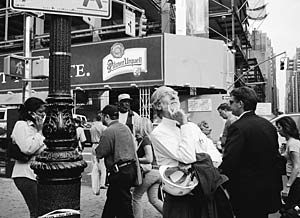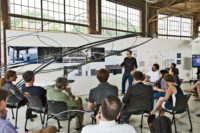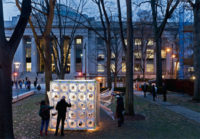[In an interview with RECORD deputy editor Suzanne Stephens in preparation for the magazine’s coverage in its February 2008 issue, the architect reflected on the building and underscored certain concerns relating to architecture at the current moment.]

“Constantly present in my mind when designing the New York Times Building was that today's architecture should be inspired by what is happening with the climatic crisis. In the way the last [20th] century opened with an interest in rationalism and the modern movement, I like the idea that this century is opening up with a discovery that the earth is fragile and the environment is vulnerable. Fragility, breathing with the earth and the environment, is part of a new culture. I thought the Times Building should have the qualities of lightness, vibrancy, transparency, and immateriality.
As it stands now, the building has a vibrant presence, and seems to breathe as it goes up. We used clear glass and ceramic rods that fragment the light. This makes you feel like you're floating in mid-air while standing in the cafeteria. However, I think next time I will use a ceramic lighter in color. Right now, it looks especially good in the luminous day, but I would've preferred a whiter shade.
At the base, the building almost hovers above the ground. We wanted to have the building engage with the street, with the city, and I wanted the space at the ground level to be joyful. A sense of permeability and participation are important. We especially tried to capture the quality of 42nd street, which has a kind of ephemeral architecture that keeps changing.
I thought the building needed to be well crafted. Craftsmanship is not an additional value but a fundamental one. It's important not to betray the spirit of well-crafted buildings.
Architecture explores and takes risk. Architecture, in general, is a complex matter, intertwined with social life, energy, poetry, art— everything. Today, architecture is a bit too distorted by an obsession with the object. I oppose the idea that a building should be tortured. Things will change. Things go up and down.
Originally published in our February 2008 issue.



Post a comment to this article
Report Abusive Comment